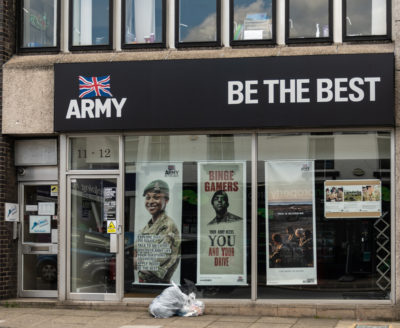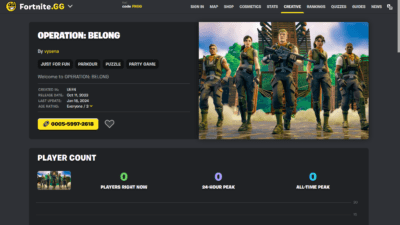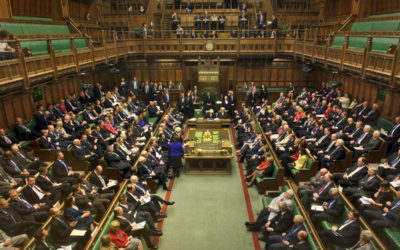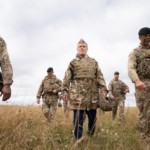MoD increases targeting of 16-year-olds show figures released today
Child Soldiers International
Figures show that more 16 year olds were recruited in the last year than 17 year olds as the government admits that is intends to increase the number of children it recruits into the armed forces.
- Recruitment of minors continues to fall, but 16 year olds now outnumber 17 year old recruits
- More than one in five Army recruits too young to be deployed
The Ministry of Defence (MoD) has released figures today showing that 1,790 minors were enlisted into the Army in the financial year to March 2016, accounting for 22 per cent (22.2%) of the army’s total enlisted intake for the same period (8,020 recruits).[1]
These figures are released in the same week as a coalition of children’s organisations from across the UK published a joint letter to the MoD urging it to raise the enlistment age,[2] and just two days after the UN Committee on the Rights of the Child challenged the UK government over its ongoing recruitment of children.[3]
Annual personnel figures published by the MoD today show that in the financial year to March 2016, minors accounted for 22 per cent (22.2%) of new recruits enlisted into the army, falling from 24 per cent (23.8%) in the previous year.[4] Absolute numbers fell by just ten recruits, which means the fall in percentage is due to an increase in adults enlisting.
Although recruitment of minors continues to fall, 16-year-old recruits now outnumber 17-year-olds by a significant margin, constituting 920 and 870 recruits respectively. Many of the youngest recruits would have begun the enlistment process when they were 15 years old, and before having an opportunity to sit their GCSE exams. Those who enlist aged between 16 and 16¼ can only enlist into frontline combat roles, where the risk of fatality is highest over the course of their military career.[5] Research found that in Afghanistan, British soldiers who enlisted aged 16 and completed training were twice as likely to be killed as those who enlisted aged 18 or above.[6]
In its report to the UN children’s rights body, reviewed earlier this week, the government admitted that, in direct contradiction of the Committee’s previous recommendations and the requests of child rights organisations across the UK, it intended actively to increase the number of children it recruits into the armed forces. It stated, “Increasing the number of personnel recruited prior to their 18th birthday is one of many measures the Army Board endorsed to alleviate the risk of undermanning.”[7]
“Prioritising recruitment of the very youngest candidates into the armed forces is a direct violation of the UK’s obligations under the Convention on the Rights of the Child” said Rachel Taylor, Programme Manager at Child Soldiers International. “Whilst we welcome the overall trend in the figures, it is deeply troubling to see that the MoD is increasing its reliance on the youngest and most vulnerable recruits to fill the most dangerous roles. This is a policy choice, not a necessity and has no place in a professional, modern armed force.”
Notes for Editors:
- MoD “UK Armed Forces Bi-annual Diversity Statistics: 2016”, published 26 May 2016, available at https://www.gov.uk/government/statistics/uk-armed-forces-biannual-diversity-statistics-2016. Table 8a shows intake by age. Across the armed forces as a whole, intake of minors fell from 18.3 per cent in the equivalent period last year to 17.9 per cent this year. There was a rise in absolute numbers of minors enlisting into the armed forces from 2,170 to 2,250 due to small increases in the RAF and navy.
- The large majority of countries worldwide now recruit only from age 18 or above. The UK is the only country in the EU or permanent member of the UN Security Council which still recruits 16-year-olds. In Germany and the United States the minimum recruitment age is 17 years; minors recruited into these armed forces account for just7 and 5 per cent of annual intake respectively. (Full figures available on request)
- Supporters of the campaign to raise the enlistment age include: Child Soldiers International, ForcesWatch, Unicef-UK, the Children’s Rights Alliance for England (CRAE), Children in Scotland, Together (Scottish Alliance for Children’s Rights), Veterans for Peace, National Union of Teachers (NUT), the Church of Scotland, the Bishops of the Church in Wales, General Assembly of Unitarian and Free Christian Churches, Methodist Peace Fellowship, Baptist Peace Fellowship, Quaker Peace and Social Witness, Pax Christi, Medact, Wales UNCRC Monitoring Group, Wales Observatory on Human Rights of Children and Young People, Amnesty International UK, Children England, Northern Ireland Commissioner for Children and Young People, Liberty, The Who Cares? Trust, Just Fair, Children’s Law Centre (N.I.), Children’s Commissioner for Wales, British Institute of Human Rights, Children and Young People’s Commissioner Scotland, Children’s Commissioner for England.
- The Defence Select Committee (2005, 2013, 2014), the Joint Committee on Human Rights (2009, 2010) and the UN Committee on the Rights of the Child(2002, 2008) have all called on the MoD to review the minimum recruitment age with a view to raising it to 18 years.
- Child Soldiers International is an international human rights research and advocacy organisation seeking to end the military recruitment and the use in hostilities, in any capacity, of any person under the age of 18. Our research on child recruits in the British armed forces is available at http://www.child-soldiers.org/country_reader.php?id=6.
[1] MoD, “UK Armed Forces Bi-annual Diversity Statistics: 2016”, published 26 May 2016, available at https://www.gov.uk/government/statistics/uk-armed-forces-biannual-diversity-statistics-2016.
[2] http://www.child-soldiers.org/news_reader.php?id=887
[3] http://tbinternet.ohchr.org/_layouts/treatybodyexternal/SessionDetails1.aspx?SessionID=987&Lang=en
[4] MoD, “UK Armed Forces Bi-annual Diversity Statistics: 2015”, available at www.gov.uk
[5] British Army (Recruiting Group), Eligibility Quick Reference Guide, 2015, p.8, available atwww.child-soldiers.org
[6] Child Soldiers International and ForcesWatch, Young age at Army enlistment is associated with greater war zone risks, 2013, available at www.child-soldiers.org
[7] Replies of the United Kingdom of Great Britain and Northern Ireland to the list of issues,
See more: legislation & policy, recruitment age, Child Soldiers International










